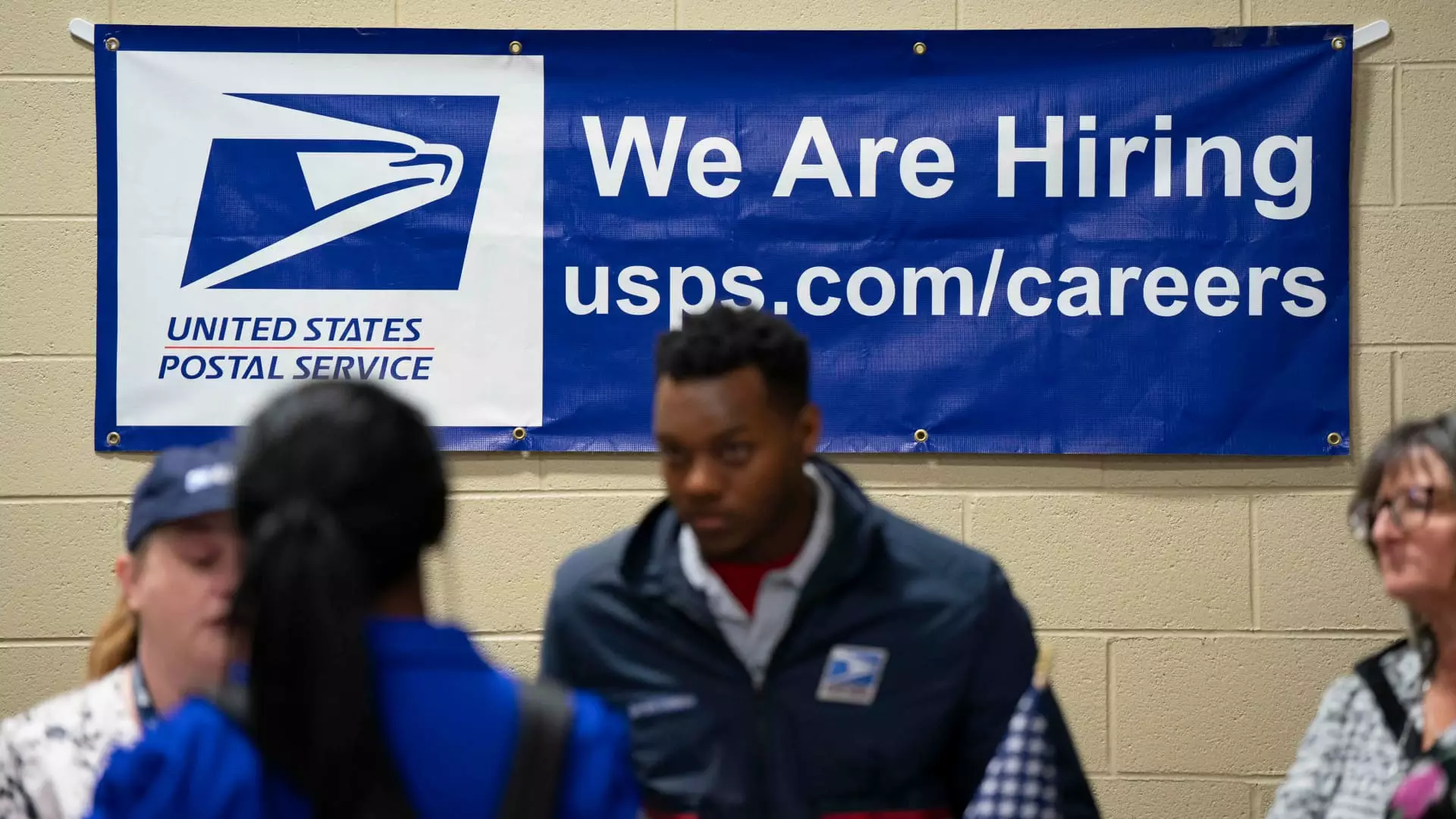May’s employment statistics have painted a somewhat optimistic picture against the backdrop of potential economic uncertainty. The Bureau of Labor Statistics reported an increase of 139,000 jobs in nonfarm payrolls, surpassing the meager estimates of analysts. While such growth appears encouraging, it is essential to interrogate whether this uptick is merely a flicker in an increasingly dim outlook. The stability of the unemployment rate at 4.2% and the improvement in average hourly earnings may offer a semblance of satisfaction, but these figures mask underlying fragilities lurking beneath the surface.
The labor market, often hailed as a harbinger of economic health, shows signs of stress that warrant our scrutiny. The figures for job growth are inflated by strong contributions in health care and leisure services, sectors that are less reflective of robust, sustainable economic growth. It’s crucial to question whether these industries can consistently prop up an economy teetering on the brink of disruption, especially when considering the heavy losses in government employment driven by administrative policies aimed at workforce reduction.
The Disturbing Dichotomy
There exists a disquieting chasm between the establishment and household surveys that provides a calibrated insight into the job market’s state. While the establishment survey proudly recorded a growth in jobs, a closer examination of the household survey reveals a stark decline of 696,000 workers. This discrepancy is a clarion call for concern, suggesting that the headlines touting job growth may not paint the full picture. Indeed, a significant portion of the workforce may be slipping into precarious part-time roles, rendering the notion of a thriving labor market questionable.
Furthermore, revisions of previous data, particularly the downward adjustments to the April job figures, act as further reminders of the transitional nature of these statistics. Every seeming gain affirms the resilience of the labor market, yet those same numbers also reveal a consistent pattern of correction, hinting at an over-optimistic portrayal that risks fostering false confidence among investors and consumers alike.
Economic Currents: The Impact of Tariffs
The external environment has undeniably imposed significant pressure on the job market, with tariffs implemented by the current administration serving as a double-edged sword. There’s an evident anxiety rippling through the economy as consumers and corporations brace themselves for the adverse effects that such protective measures may incite. The paradox here lies in the desire to protect American goods while potentially strangling growth through increased prices and reduced spending power.
As Federal Reserve officials prepare for their upcoming policy meeting, their caution reflects an acute awareness of the economic headwinds that threaten to inhibit growth. The Fed’s hesitance in adjusting interest rates in the face of evolving data indicates a broader acceptance of the tumultuous economic reality. With fears of inflation likely stemming from tariffs, the central bank stands at a precipice, faced with the formidable task of navigating uncharted economic waters fraught with volatility.
The Economic Sentiment: A Brewing Storm?
Amid this complex landscape, consumer and business sentiment appears marred by trepidation. The anxiety felt by these stakeholders signals a recognition of the precariousness of current growth trends. Market responses to monthly job reports, while initially optimistic, often do not incorporate longer-term implications. Investors may celebrate transient gains, yet lurking concerns around trade policy and fiscal strategies risk instigating market corrections at any moment.
This ongoing dance of optimism and anxiety speaks volumes about the integrity of our economic framework. The fact that even amidst reported growth, experts like Daniel Zhao express unease over the sustainability of the job market underscores a critical reality: resilience should not be confused with robustness. As we inch forward, the precarious balance that defines our economy remains susceptible to shifts that could counterbalance the minor victories we cling to.
Rather than viewing the labor statistics as clear indicators of a healthy economy, we must engage in a more nuanced analysis that takes into account correction trends, sectoral weaknesses, and broader economic anxieties. The promise of jobs and rising wages cannot so easily obscure the structural challenges lying in wait, ready to unravel the fragile facade of stability.

Leave a Reply